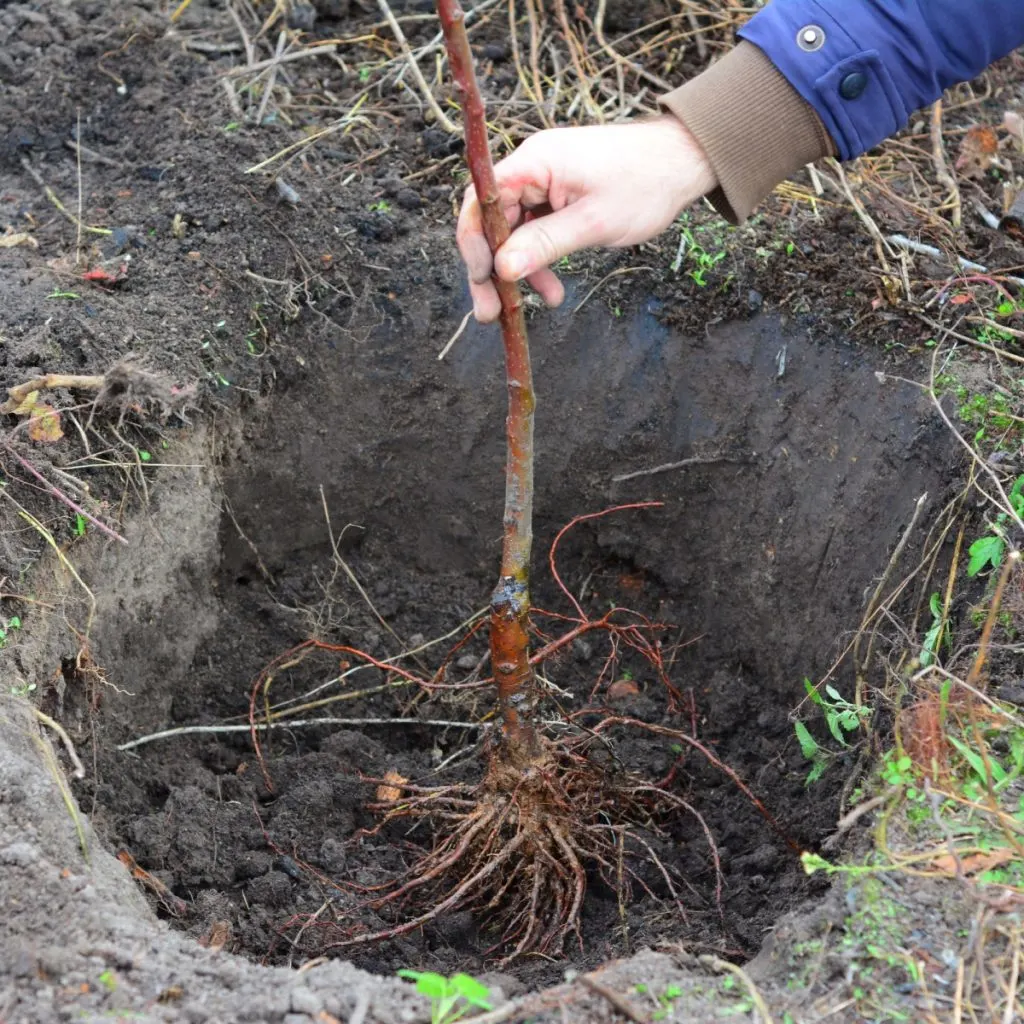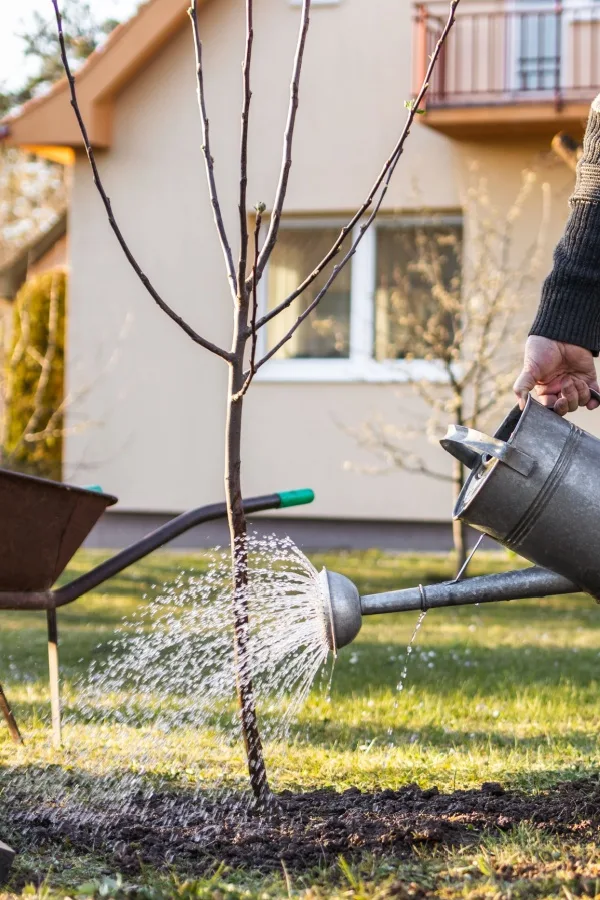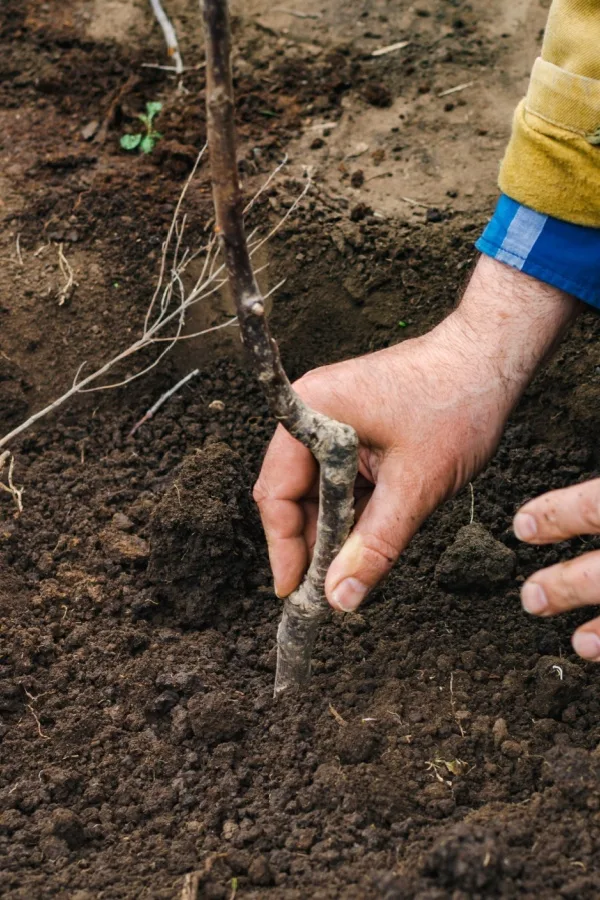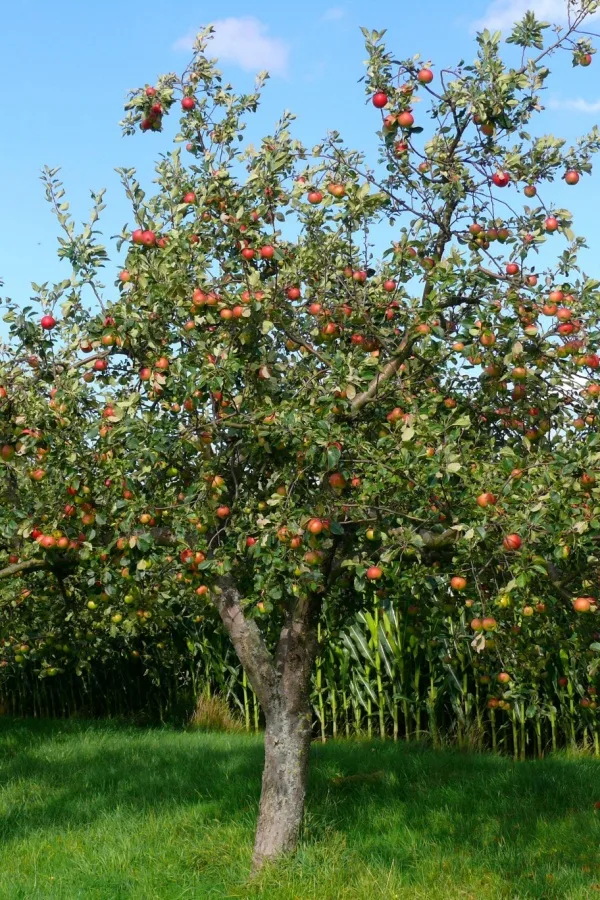If you are looking for the best time to plant your apple trees this year, there’s no better time than the fall. In fact, it’s actually the perfect time to plant a wide variety of all kinds of delicious fruit trees!
Even though most annuals, perennials, bushes and trees are on their way out or heading into dormancy in early fall, there are a lot of advantages for putting in apple trees as the cooler weather arrives. And not just for the apple trees – but for the person planting and caring for them as well!
Although technically you can plant most fruit trees at any time during the growing season, as you will see below, autumn really is the ideal time to get your trees in the ground – and it all starts with the cooler temperatures allowing fruit trees to settle in without all of the stress spring and summer can bring!

The Advantages Of Planting Apple Trees In The Fall
During the cooler fall months, newly planted apple trees experience way less stress than those planted in the spring or summer months. This same goes for other newly planted fruit trees as well.
When a tree first goes in the ground, it can take it time to adjust to its surroundings and begin to push its roots out. This process can be tough on trees when they also have to deal with the extreme heat and sunlight that late spring and summer often bring.
There is little worry of this in the fall. And even though it is cooler, there is usually plenty of warmth and time for the roots to still grow and establish before winter hits. This small growth spurt in the fall is vital for the tree, allowing it to be ready for the hotter temperatures the following spring and summer bring.

In addition, without the blazing heat of summer, there is less need for watering. It can be quite the challenge to get enough water to newly planted trees – especially in the summer when you have to often double up your watering efforts.
With fall planting, the watering can be spaced out a bit more due to the cooler conditions. Even better, once the trees become dormant, you can cease watering altogether. Then, come spring, the trees are more established and will require less frequent watering. Now that we’ve covered the “Why” of fall planting – here’s a look at how to plant your apple trees for success!
Why And How To Plant Apple Trees In The Fall
Preparing For Planting
One of the most important parts of planting an apple tree if finding the ideal location – and that will all depend on the type of apple tree you buy.
Most apple trees come in a variety of different sizes including Standard, Semi-dwarf, and Dwarf. Which size you choose will depend not only on availability but also on where you want to plant the trees.
Some standard-sized trees can grow to be 30 feet or taller. Dwarf varieties, on the other hand, only grow to be around 6 to 12 feet tall. It’s important to make sure your location will have enough space to handle your tree’s future growth.
Also, keep in mind the width of the mature tree as well. Placing multiple trees too close together not only will cause the plants to become overcrowded but also increase the likelihood of disease and pest issues.

Selecting The Right Variety – How To Plant Apple Trees In The Fall
When choosing which apple trees to plant in the fall, another important part of the process is picking the right variety. Not all apple varieties are good for growing in all locations.
For example, some apple varieties are more cold hardy than others. If you live in a location that experiences sub-zero temperatures and the variety you plant isn’t hardy, you will likely end up with a tree that is damaged, or completely frozen out.
Last but not least, you also need to keep pollination in mind. Most apple trees are self-sterile, which means they require a second pollinator in order to bear fruit. Usually, a different variety that blooms during the same time frame is required.
Most local garden centers and online nursery retailers will have charts or information on what varieties make good pollinators. A quick online search will also usually get you the information needed if you have a specific apple tree variety in mind.
The Planting Process – How To Plant Apple Trees In The Fall
The good news is that once you have your tree or trees, planting is relatively simple to do. The first goal is to create a hole that is large enough to allow the roots to easily expand and grow.

In the case of apple trees – and other fruit trees – you want to dig a hole that is at least double the diameter of the tree’s root ball and about 1.5 times as deep. If you have heavy, clay-like soil, expanding that to triple the width is even better.
Into the bottom of the hole, add an equal mix of compost and soil. The compost will help to immediately provide easily absorbed nutrients to the plant’s roots. Next, add in your tree. Make sure that the top of the rootstock is about 2 inches above the soil line. Then, water the plant thoroughly. This allows the soil and compost to fill in around the root ball.
Backfill with the remaining soil and more compost. Make sure that the trunk of the tree stays nice and straight while you backfill, tamping down the soil lightly as you fill the hole.
Mulching And Watering – How To Plant Apple Trees In The Fall
To finish, add several inches of mulch around the base of the tree. Don’t create a “volcano” of mulch where the mulch is built up against the trunk. Instead, the mulch should be in more of a donut shape around the trunk. This will allow water to filter to the roots below and keep the trunk safe from sitting in water.

A big key to success with planting apple trees in the fall is proper watering. For the first few weeks after planting, each tree needs around 5 gallons of water every 2 to 3 days. This prevents the roots from drying out and also allows the soil to settle in.
You can then cut back to watering weekly after that. If you live in colder climates, stop watering once the ground freezes. It’s also a good idea to stake newly planted trees to help protect them from high winds or storms.
The fall is also the perfect time for pruning mature apple trees. But with newly planted trees, no pruning should be done at all. For more on pruning, see our article How To Prune Apple Trees – And Why Winter Is The Time To Do It!
Here is to planting a few apple trees in your landscape this year. And, to enjoying harvests for years to come!
Simple Garden Life
Follow Our Facebook Page For Even More Great Tips! Simple Garden Life Facebook Page
Simple Garden Life is a website dedicated to keeping gardening fun, simple and enjoyable! We publish two new articles each week along with a new garden podcast episode every two weeks. This article may contain affiliate links.
